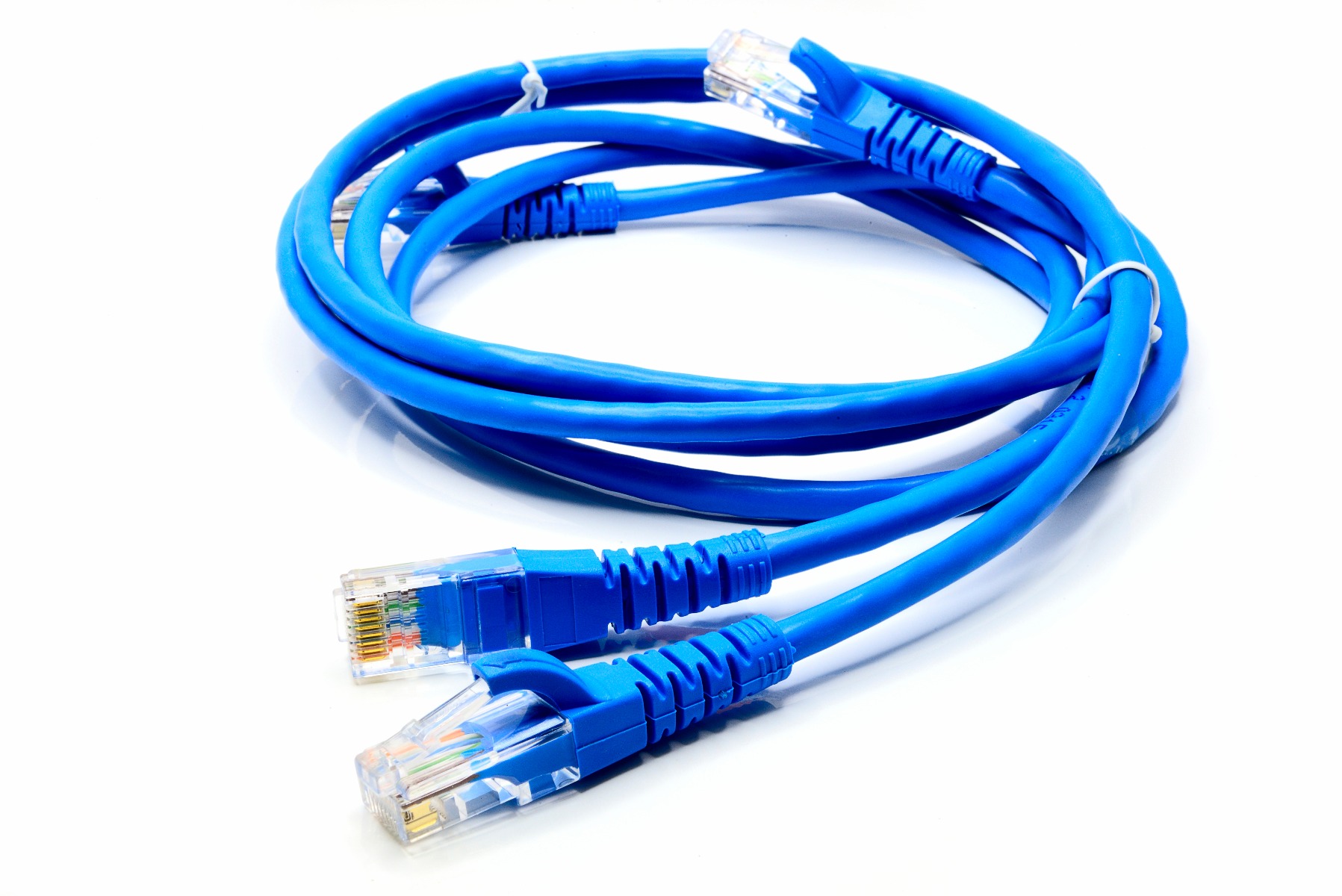Choosing your Ethernet: The Easy Guide to Connectivity
Network leads, patch cords, twisted pair, blue cables: Ethernet Cables. Ethernet cables are crucial to the performance of your network, no matter how advanced the router or switches installed within your system; ultimately, it is the cables that transmit all that juicy data. So when it's time to choose your cables, the range and information about them can indeed be daunting. With so many options and prices, getting it wrong can not only mean your network doesn't perform as well as it is capable of, but it can also prove to be a more significant cash layout that it otherwise needs to be.
From Cat5e ethernet cable to Cat6, 100% copper or CCA (Copper Clad Aluminium - HINT: Don't use this. READ MORE...), there are so many options, so how do you get it right? Let's look at the various cables available and how they affect your network, as well as breaking down the materials involved with higher priced cables and why they may be a good investment for you.


Network Speed
We start with the necessary specifications for your cables, which directly affect how fast your network performs when transferring data. Let's not get started on the NBN, but if you have horrendous network speeds, no matter how much the cable costs, it will not get you up to maximum velocity. As Ethernet cables run only as fast as the port allows them, you will not see any performance difference if the capacity of your internet connection is a bottom dweller. So Cat6a Ethernet cables, Cat5e or Cat6? And you may notice that some are more expensive. So what does that mean? The names are an indication of the data transfer speed that the cable is rated for, with the lower the number the slower transfer.
The other differences in patch cables are the flexibility, what the outside jacket is made of and the type of ends or connectors - which are most commonly RJ45 - shielded, unshielded, boots, no boots...
Cat5e Ethernet Cable
Having been the standard ethernet cable for a long time, Cat5e Ethernet cables have a specification that can provide speeds of up to 1000 Mbps, matching the Gigabit speeds of newer routers and switches. However, the specification requires slightly thinner wires than Cat6 alternatives, making it more flexible. Cat5e Ethernet cables are usually the most cost-effective option, and for many uses they are ideal. However, the lack of shielding and a significantly reduced bandwidth of 100MHz does mean that other options prove more suitable for data-intensive situations such as operating multiple IP voice lines, enterprise web hosting, file sharing and Local Area Network (LAN) connectivity.
Cat6 Ethernet Cable
A step up in terms of overall specification, Cat6 ethernet cables have improved resistance to crosstalk and system noise for more reliable performance. While the specification provides the same Gigabit speed as Cat5e, thanks to thicker wires these cables provide much greater bandwidth at up to 250MHz. But, that thicker size does make Cat6 ethernet cables less flexible than Cat5e, and due to the extra copper, equates with a higher cost. In terms of suitability, the extra bandwidth and more robust construction make Cat6 ethernet cables suitable for more data-intensive situations, and the stronger construction does make them particularly suitable for commercial environments with lots of traffic, or in areas where they are built into the walls or ceilings as they are better able to resist crimping and breaks.


Cat6a Ethernet Cable
With a further boost from Cat6, the 'A' stands for 'augmented', and in practice, this means higher speeds and bandwidth, as well as shielding to deliver increased data integrity. Cat6a Ethernet cables are capable of transmitting data at 10 Gigabit speeds, with a bandwidth of 500MHz, that is ten times the speed and double the bandwidth of Cat6 ethernet cables. The specification also includes shielding on all cables, rather than an option as it is on the other two, providing increased data integrity and improved performance.
The most expensive cable option of the three, Cat6a ethernet cable is most suited to networks that require the highest levels of performance, with Cat6a matching the speed of the latest 10 Gigabit routers, switches and other hardware.
Other notable entries
Cat7 cable is also available but is not frequently used in typical network deployments. While these cables are capable of speeds as high as 100 Gbps at short distances and 10 Gbps at longer distances, they require a different connection type than the Cat5 or Cat6 cables. Cat7 cabling is constructed with both twisted pair shielding and a layer of shielding around the entire cable, which must be grounded. As a result, Cat7 cables are generally reserved for data centres or very large enterprise networks.
The key to finding the right cable for your particular need begins with the cable type, and for most situations, Cat 5e Ethernet cables offer a great compromise between performance and cost that fits the user needs, they are the most popular cable today for a reason - especially for household applications. However, for those who do need increased bandwidth and higher speeds, Cat6a ethernet cable or the middle-ground Cat6 ethernet cables provide the data transmission you need.
Once you have established the kind of cables required, then it is a question of sourcing cables that are 100% pure copper wires to make sure you always get the performance you are looking for. While the savings may initially seem attractive, in the case of 100% copper over CCA, you really do get your money’s worth. Simple rule: Always stick with 100% copper. Poor quality cables will suffer degradation over time, could even harm other equipment or even pose a fire risk.

